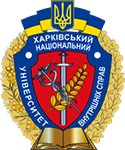Application of the reconnaissance technique using camouflage and statutory uniforms in the operation of a UAV
Abstract
The article considers the problematic issues caused by the current circumstances, when the country is in a special legal regime of martial law and the importance and relevance of using an unmanned aerial vehicle (UAV) for reconnaissance of objects by the police on the ground are extremely high. The article analyses the effectiveness of different types of camouflage in countering reconnaissance using UAVs in different terrain; the optimal camera angle and the optimal flight altitude of UAVs for effective counteraction to the camouflage properties of the respective camouflage in different terrain are determined. Not only military camouflage, but also police uniforms are considered, which expands the scope of UAVs and makes the study more comprehensive. The study of the reconnaissance methodology using UAVs will allow the police to adapt quickly and effectively to new circumstances, as well as help optimise the performance of their combat missions. The effectiveness of the methodology of object reconnaissance on the ground in real scenarios is evaluated. Recommendations for improving the conduct of such operations as monitoring of mass disorders, rapid response to hazards, factors, etc. are provided. In developing the methodology for determining the optimal distance, the psychophysiological aspects of UAV operators are taken into account for the first time and the determination of optimal distances for effective detection and identification of objects is proposed.
Downloads
References
Beale, J. (2023, May 4). How Russia dominates the AFU in drones, and the Ukrainians are helped by World War I technologies. BBC News Ukraine. https://www.bbc.com/ukrainian/features-65482270.
Shevchenko, T. V., Kulak, O. I., & Kalhushkin, Yu. L. (2022). Relevance of the implementation of the methodology of reconnaissance in the service and combat activities of the personnel of the national police. In Training of law enforcement officers in the system of the Ministry of Internal Affairs of Ukraine under martial law. KhNUIA.
Shevchenko, T. V., Vlasenko, I.V., & Koteliukh, M. O. (2023). Analysis of the use of unmanned aerial vehicles in the official and combat activities of the National Police of Ukraine. Law Bulletin, 29, 459–465. http://doi.org/10.32850/LB2414-4207.2023.29.56.
Frolenkova, P., Shevchenko, T., & Pabat, O. (2023, March 16). Analysis of the practice of using unmanned aerial vehicles in police units around the world [Conference presentation abstract]. All-Ukrainian Scientific and Practical Conference “Actual problems of law enforcement in conditions of martial law”, Khmelnitsky, Ukraine.
Liubutina, Ya. V., & Bonarenko, M. M. (2019). The relevance of the use of masking a policeman in an operational environment. In Training of police officers in the context of reforming the system of the Ministry of Internal Affairs of Ukraine. KhNUIA.
Tsyrkulienko, A. M. (2019, April, 19). Features of service and combat missions [Conference presentation abstract]. Regional Round Table “Current issues of ensuring the service and combat activities of the security and defense sector forces”, Kharkiv, Ukraine.
Copyright (c) 2024 A. М. Tsyrkulienko, O. О. Les, V. V. Mushka

This work is licensed under a Creative Commons Attribution 4.0 International License.



